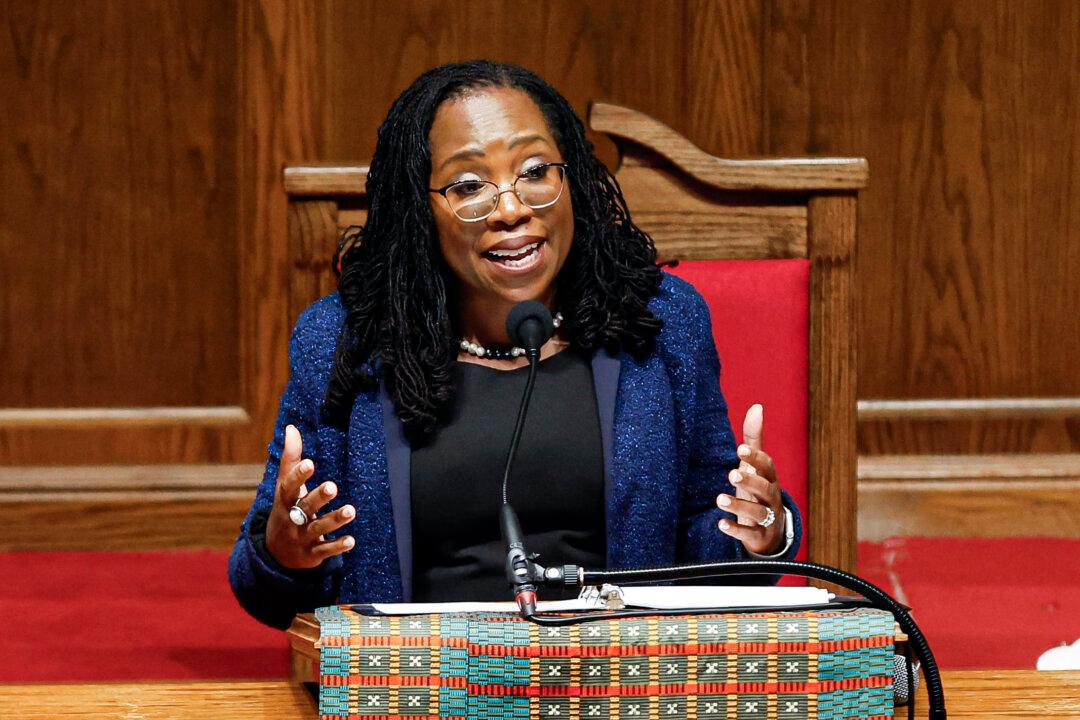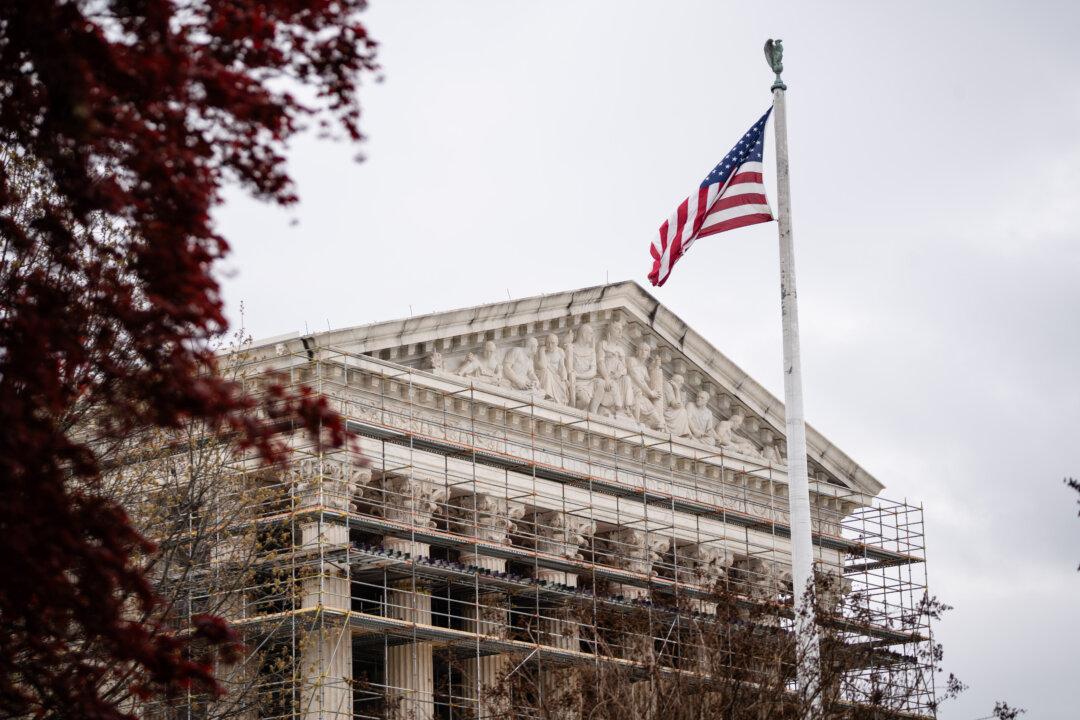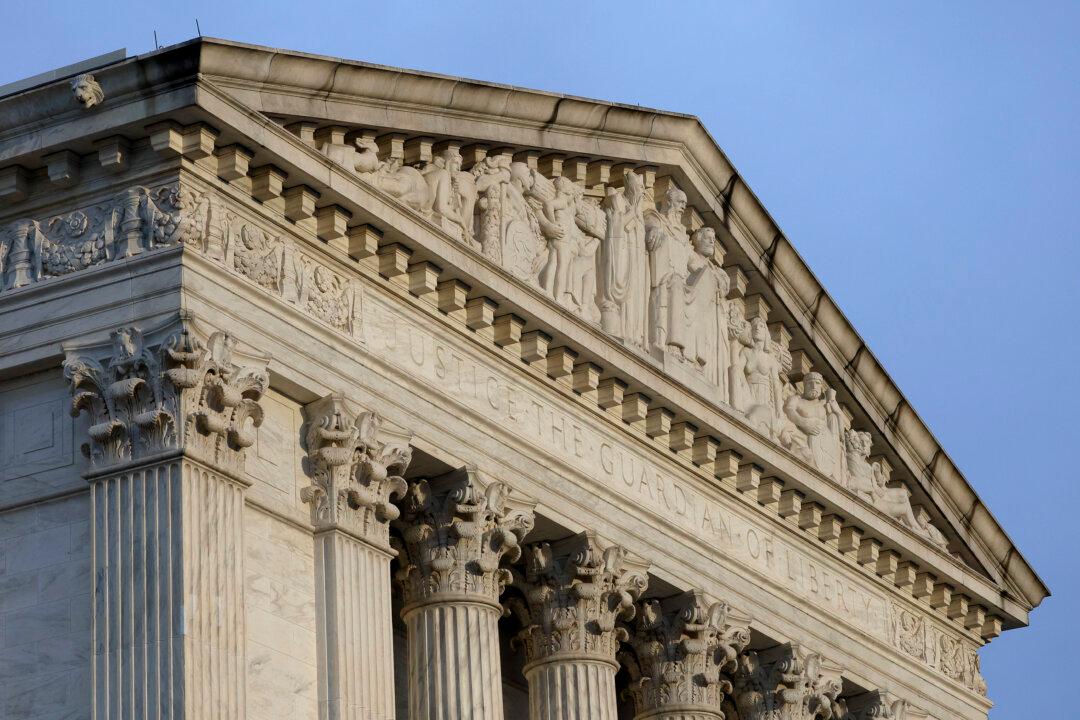The Supreme Court struggled this week with a complex discrimination lawsuit that blind patients filed against Labcorp over self-service kiosks they could not use.
The case, Laboratory Corporation of America Holdings v. Davis, was heard on April 29.
The petitioner does business with the public as Labcorp. The respondents are blind Labcorp patients, including Luke Davis and Julian Vargas.
The issue in the case is whether a federal district court may certify a class action that includes claimants who have not experienced an injury.
In a class action, one or more plaintiffs sue on behalf of a “class,” or a larger group of people who claim to have suffered the same injury because of a defendant. Federal and state court rules govern whether a class action gets certified and is allowed to proceed.
The company began offering self-service kiosks at its patient service centers, but blind individuals could not access them without help, the petition said.
In 2020, a group of legally blind people filed a putative—or proposed—class action lawsuit, claiming that the kiosks violated the federal Americans with Disabilities Act (ADA) and California’s Unruh Civil Rights Act.
Labcorp claims that not all blind people in the class actually experienced injuries as a result of the company’s policies.
When it granted the petition on Jan. 24, the Supreme Court said it would consider whether federal civil procedure rules allow a federal court to certify a class action “when some members of the proposed class lack any Article III injury.”
Article III of the U.S. Constitution governs federal courts and has been interpreted as saying that those courts may only hear cases involving actual controversies in which at least one litigant has standing to sue.
Standing refers to the right of someone to sue in court. The parties must show a strong enough connection to the claim to justify their participation in a lawsuit.
The company stated in the petition that “it is very hard to find blind patients actually harmed by the availability of Labcorp’s new kiosks.”
Many blind patients “either do not know these kiosks exist or, if they did, have zero interest in using them, preferring instead to use the front-desk option that has served them well for years,” it said.
Moreover, the other side could not point to any patients who could not avail themselves of Labcorp’s services because they could not access a kiosk, according to the petition.
The plaintiffs in the original lawsuit defined the proposed classes as “all blind patients who had been merely exposed to these allegedly unlawful kiosks—i.e., blind patients who had walked into a [patient service center] with a kiosk, regardless of whether they knew about or wanted to use it.”
The plaintiffs said this meant the classes could number as many as hundreds of thousands of people and could lead to about half a billion dollars per year in damages, the petition states.
In May 2022, a federal district court certified two classes in the lawsuit.
One class consisted of patients in California seeking damages under the Unruh Act; the other class consisted of patients across the country seeking relief under the ADA and two other federal statutes—the Rehabilitation Act and the Patient Protection and Affordable Care Act.
“Neither court ... disputed that each class contained a sizable number of members who lacked Article III injuries—which makes good sense, because a person simply proximate to an allegedly unlawful kiosk has not suffered any concrete injury,” the petition said.
The Ninth Circuit’s “lax approach to certification” has been rejected by about half the federal circuit courts, it added.
Allowing uninjured persons into a class “can drive up potential liability, and thus manufacture leverage with which to extort a settlement.” This means that weak claims can move forward and millions of dollars can be “extracted from companies who have done nothing wrong—but nonetheless cannot tolerate a massive litigation risk,” the petition said.
“If a class is defined to include plaintiffs without Article III standing and, as a result, you need thousands of mini-trials to separate the wheat from the chaff, the Article III issue necessarily swamps any common ones,” said Francisco, who was U.S. solicitor general for most of the first Trump administration.
In this case, “plaintiffs who don’t want to use kiosks don’t have standing to challenge how kiosks work any more than a vegan has standing to challenge how a restaurant defines a medium rare steak,” he said.
It follows that the Supreme Court “needs to assess whether each of the 8,000 to 112,000 class members actually want to use kiosks, and that will necessarily swamp any common issues, as the D.C. and First Circuits correctly held” in two prior cases, Francisco said.
Justice Clarence Thomas asked Francisco if the Supreme Court has jurisdiction to deal with this case.
“This court has the jurisdiction to address that judgment, reverse it, and send it back to the Ninth Circuit,” the attorney said.
Justice Ketanji Brown Jackson said Labcorp is responsible “for the confusion that we are in right now.”
She said Labcorp previously argued that the class definition was “too narrow” but that today, it is “saying it’s improper because it’s too broad.” The definition “now includes uninjured people, whereas, before, it … contained only injured people,” she said.
Justice Sonia Sotomayor expressed concern that the Ninth Circuit’s opinion may be an advisory opinion.
An advisory opinion is a non-binding opinion in which a court provides advice on a hypothetical legal question.
During a discussion with Department of Justice attorney Sopan Joshi, Justice Neil Gorsuch said the Ninth Circuit ruling “really does start to sound sort of like an advisory [opinion].”
The respondents’ attorney, Deepak Gupta, said the Supreme Court has previously ruled that “Article III doesn’t give federal courts the power to give relief to any uninjured plaintiff, class action or not.”
The lawyer said if the court rules on the merits of the case and issues an “advisory opinion,” that opinion should state “that at the class certification stage, the proper inquiry is whether there will be an administratively feasible mechanism to weed out the uninjured.”
The Supreme Court is expected to rule on the case by the end of June.






